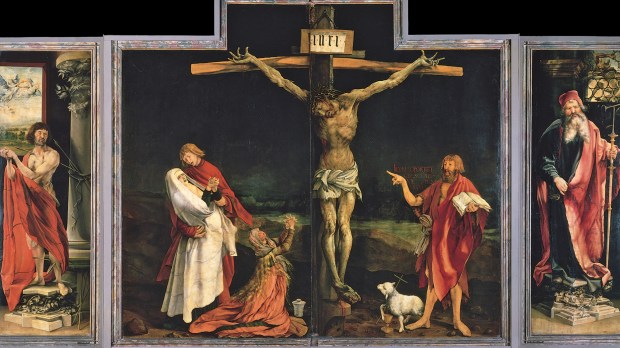Picasso was more than perhaps the greatest artist of the 20th century; he was also one of its most notorious atheists. Despite this, there is one theme that seems to show a different side to him. Over the years he drew or painted around 50 scenes of the Crucifixion. This was not much for a man who created more than 20,000 works during his lifetime. What’s curious is that there are no other religious themes. The only exception is one of his earliest paintings: a young girl – perhaps his sister – at her First Holy Communion. Otherwise, it’s all about the culmination of Christ’s Passion.
Could it be that Picasso was quietly moved by Calvary? He tried to contradict any possibility that he might have returned to the Catholicism in which he raised. Throughout his life he proclaimed himself to be an atheist. The label stuck so well, he was denied the religious commissions that Matisse managed to secure. One rejection stated that he was a “Communist artist and enemy of God.”
The closest he came to a religious reawakening was caused by a work of art. In 1932 he visited Switzerland and probably went to northeastern France to look at the Isenheim altarpiece. Painted by Matthias Gruenewald in the early 16th century, it is as raw a piece of imagery as can be imagined, even of a work depicting the Crucifixion. Picasso found in it all the human savagery and despair that he was always seeking out. Did he find any sense of redemption, though?
The numerous sketches he produced afterwards were different from the luridly colored Crucifixion he painted two years earlier. Their monochrome fragmentation led the way to his famous Guernica painting. The drawings appear filled with a new passion, with a small ‘p.’ If they were a small plea from his soul for more spirituality in his work, it was a very private gesture.

The only other indication that Picasso wished to be accepted as a Catholic once again is the testimony of a priest many years later. It seems that at the age of 77 Picasso told the priest he wanted to have a church wedding and to be buried in Malaga Cathedral. Neither of these happened.
At least we still have his Crucifixion drawings and the hope that he might have been a less selfish man than he portrayed himself as being.
The virtual Museum of the Cross
The Museum of the Cross, the first institution dedicated to the diversity of the most powerful and far-reaching symbol in history. After 10 years of preparation, the museum was almost ready to open; then came COVID-19. In the meantime, the virtual museum is starting an Instagram account to engage with Aleteia readers and the stories of their own crucifixes: @crossXmuseum

